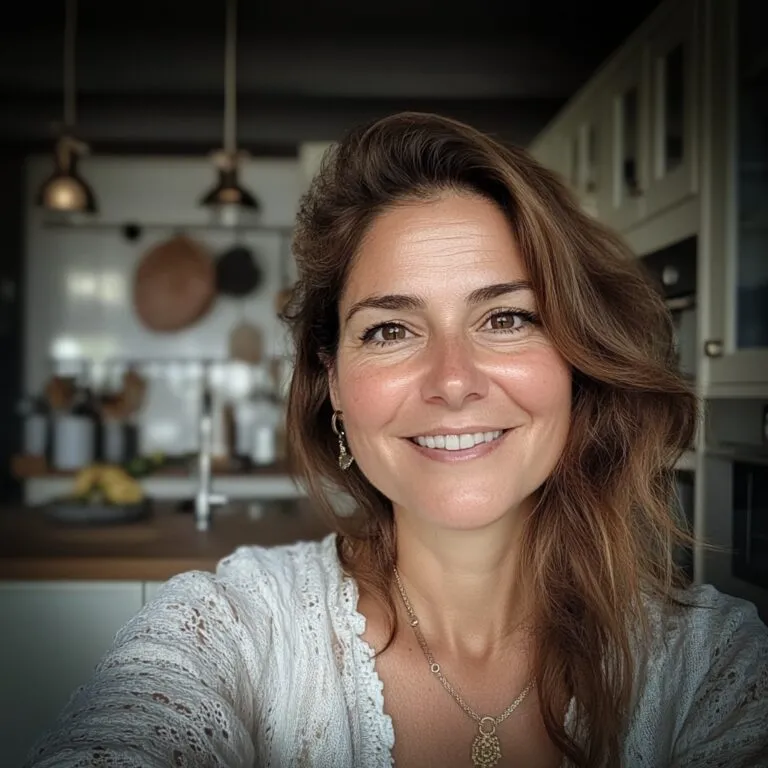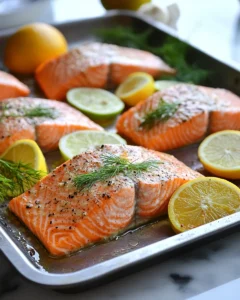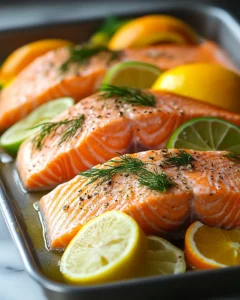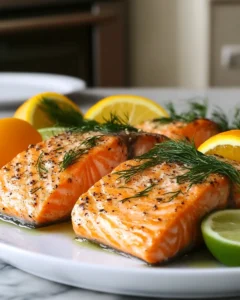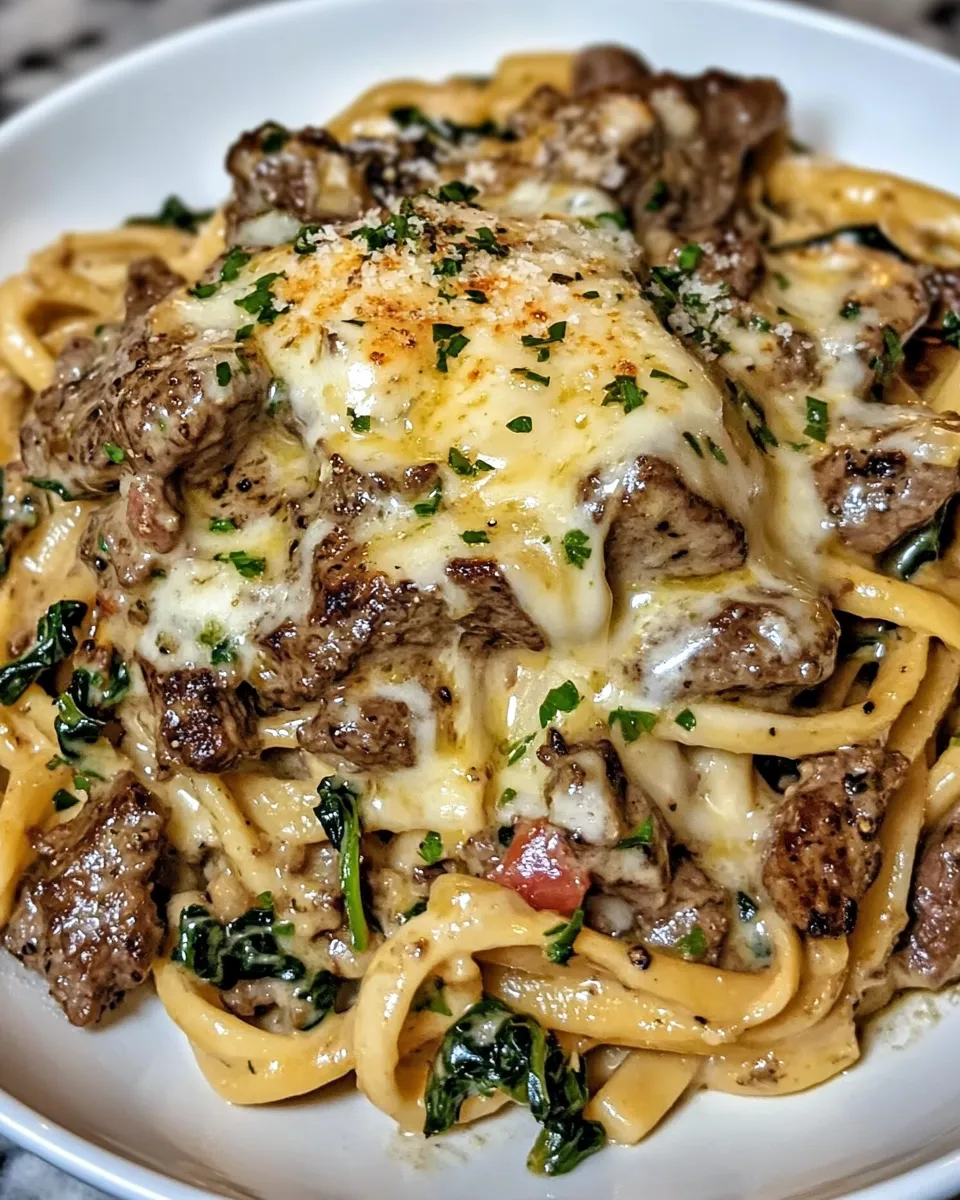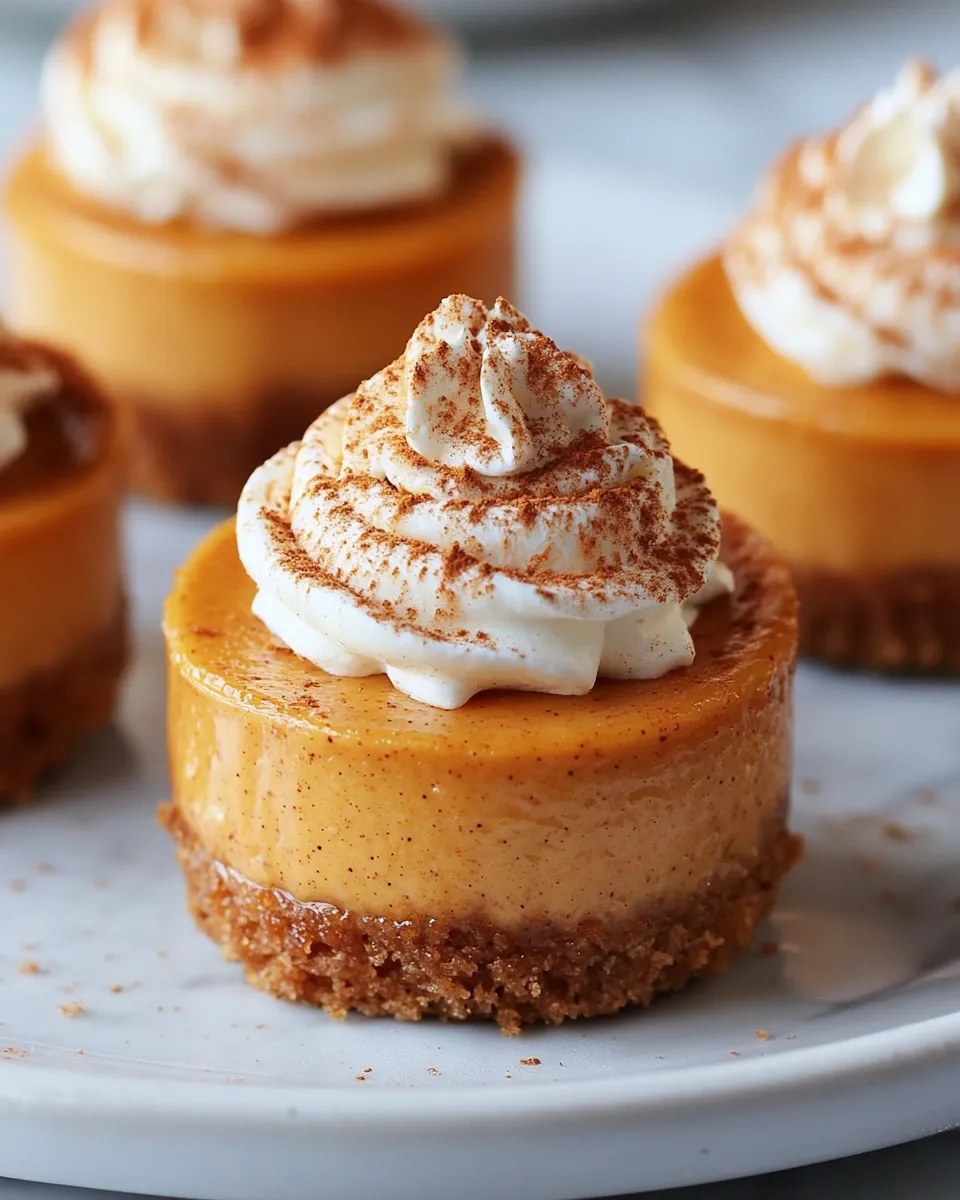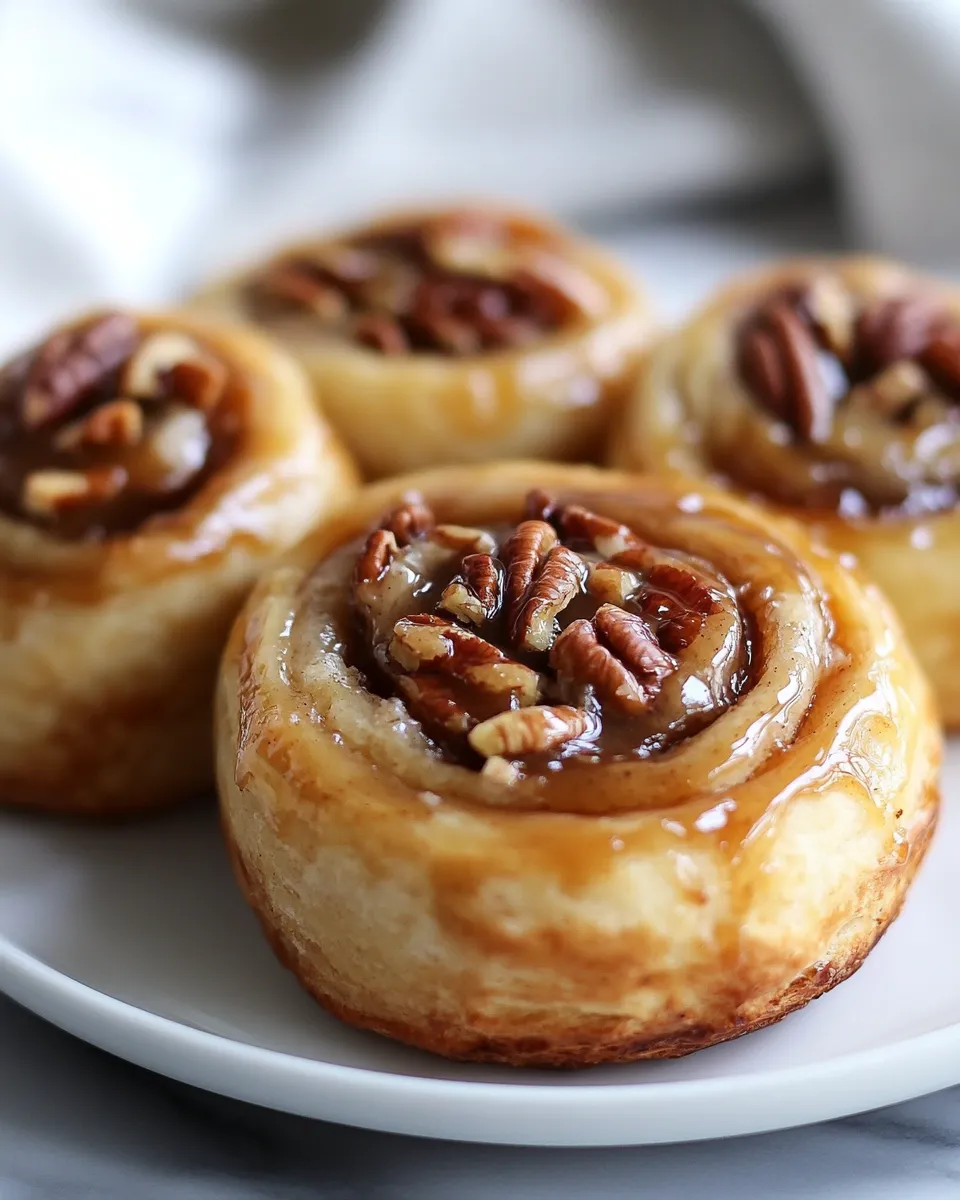There’s something timeless and elegant about a perfectly roasted salmon fillet. Whether it’s the centerpiece of a casual weeknight dinner or the star attraction at a festive gathering, salmon offers a balance of rich flavor and healthy nourishment that appeals to nearly everyone. This Roasted Salmon with Citrus & Dill recipe was inspired by the fresh, bright flavors often found in coastal kitchens, where seafood is prepared simply yet with great care. The combination of juicy citrus slices, fragrant dill, and tender salmon creates a dish that feels special but is surprisingly easy to prepare. It’s a recipe that celebrates both comfort and freshness—ideal for spring dinners, summer celebrations, or anytime you want to serve something that feels both wholesome and refined.
Why You’ll Love This Roasted Salmon with Citrus & Dill
This dish isn’t just about the salmon—it’s about the harmony of flavors. The citrus adds brightness, the dill provides a fresh herbal lift, and the roasting process ensures the salmon stays tender and juicy. Here are a few reasons you’ll love this recipe:
-
Simple and Elegant: A minimal number of ingredients transform into a dish that looks like it came from a restaurant kitchen.
-
Healthy and Nutritious: Packed with omega-3 fatty acids, lean protein, and immune-boosting citrus.
-
Perfect for Any Occasion: It works for family dinners, date nights, or holiday feasts.
-
Versatile Presentation: Serve it with roasted vegetables, a grain salad, or alongside fresh bread for a complete meal.
Ingredients
To make this flavorful roasted salmon, you’ll need a handful of fresh, wholesome ingredients:
-
2 pounds salmon fillet (skin on, preferably wild-caught)
-
2 medium oranges, thinly sliced
-
1 lemon, thinly sliced
-
1 tablespoon lemon juice (freshly squeezed)
-
2 tablespoons olive oil
-
3 garlic cloves, minced
-
1 teaspoon sea salt
-
½ teaspoon black pepper
-
¼ teaspoon crushed red pepper flakes (optional, for a little heat)
-
¼ cup fresh dill, roughly chopped
-
Fresh dill sprigs for garnish
Step-by-Step Directions
1. Prepare the Salmon
Start by preheating your oven to 400°F (200°C). Roasting salmon at this temperature ensures it cooks evenly while maintaining its natural moisture. While the oven is heating, line a large baking sheet with parchment paper or lightly brush it with olive oil. This step makes cleanup easy and prevents the salmon from sticking to the pan.
Place the salmon fillet skin-side down in the center of the baking sheet. If your salmon has pin bones, take a moment to remove them with a pair of kitchen tweezers or your fingertips. This small step creates a smoother texture and makes the finished dish more enjoyable to eat.
Next, gently pat the salmon dry with paper towels. This is one of the most important steps in preparing fish. Excess moisture prevents seasoning from sticking and can cause the salmon to steam rather than roast. By drying the surface, you allow the olive oil and seasonings to cling properly, resulting in better flavor and texture.
If desired, score the salmon lightly with shallow cuts across the surface. This helps the citrus and herb mixture penetrate deeper into the fish for even more flavor.
2. Create the Citrus & Herb Mixture
In a small bowl, whisk together the olive oil, lemon juice, minced garlic, sea salt, freshly ground black pepper, and optional crushed red pepper flakes. The olive oil acts as the base, ensuring the fish stays moist while roasting. Fresh lemon juice brightens the dish and cuts through the richness of the salmon, while garlic adds depth and savory undertones.
The balance of seasonings here is what makes this recipe shine. The salt enhances the natural sweetness of the fish, the pepper adds a gentle bite, and the red pepper flakes provide just a hint of heat without overpowering the dish. If you prefer a milder flavor, you can omit the flakes altogether.
Once the mixture is ready, drizzle it evenly over the salmon fillet, making sure to cover both the top and sides. Use the back of a spoon or a pastry brush to spread it across the surface. This step locks in flavor and creates a base for the citrus slices and dill to adhere to.
3. Layer the Citrus Slices
Now it’s time to add the citrus. Thinly slice the oranges and lemon into uniform rounds so they roast evenly. Arrange the slices directly over the salmon fillet, overlapping slightly for a beautiful layered effect. You can also tuck a few slices around the fish on the baking sheet, which not only looks appealing but also allows the juices to seep into the pan as they cook.
As the salmon roasts, these citrus slices soften and release their fragrant oils. The oranges provide a gentle sweetness, while the lemons add tangy brightness. Together, they infuse the salmon with a lively freshness that balances the richness of the fish. The slices also create an eye-catching presentation, making this dish perfect for entertaining or holiday meals.
4. Add Fresh Dill
Generously sprinkle chopped fresh dill over the top of the salmon and citrus. Dill has a naturally grassy, slightly anise-like flavor that pairs beautifully with seafood, particularly salmon. Its lightness prevents the dish from becoming too heavy and adds a vibrant herbal note that ties all the flavors together.
If you’re serving this dish for a special occasion, reserve a few whole sprigs of dill to use later as garnish. Fresh herbs always elevate the visual appeal of a dish, making it look both rustic and elegant at the same time.
5. Roast the Salmon
Place the baking sheet in the preheated oven and roast the salmon for 15 to 18 minutes, depending on the thickness of the fillet. A general rule of thumb is to cook salmon for about 4 to 6 minutes per half-inch of thickness.
To check for doneness, insert a fork gently into the thickest part of the salmon. If it flakes easily and appears opaque, it’s ready. Another option is to use an instant-read thermometer; the ideal internal temperature for salmon is 145°F (63°C).
Be mindful not to overcook the salmon, as it can quickly become dry. The citrus slices on top help protect the fish by keeping moisture in, but keeping a close eye on the timer ensures you achieve that perfect balance of tender and juicy.
6. Garnish and Serve
Once the salmon is done roasting, remove the baking sheet from the oven and let it rest for about 5 minutes. Resting allows the juices to redistribute throughout the fish, keeping it moist and flavorful when sliced.
Carefully transfer the fillet to a serving platter using a wide spatula. Arrange the roasted citrus slices around the salmon for a beautiful presentation. Garnish with fresh dill sprigs for a finishing touch.
Serve your Roasted Salmon with Citrus & Dill with your choice of sides—whether that’s roasted vegetables, herbed rice, or a crisp salad. Each bite will combine tender salmon, zesty citrus, and fragrant dill for a dish that feels both simple and gourmet.
Serving Suggestions
Roasted salmon pairs wonderfully with a variety of accompaniments. Here are some ideas to complete your meal:
-
Vegetable Sides: Try roasted asparagus, steamed green beans, or a crisp garden salad.
-
Grains: Serve alongside fluffy quinoa, wild rice, or lemony couscous.
-
Potatoes: Garlic mashed potatoes or oven-roasted baby potatoes add hearty comfort.
-
Light Sauces: A drizzle of lemon-dill yogurt sauce or a spoonful of avocado crema makes a refreshing addition.
Tips for Perfect Roasted Salmon
-
Choose Fresh Salmon: Opt for wild-caught salmon if possible—it has superior flavor and texture compared to farmed salmon.
-
Don’t Skip Drying the Fish: Removing excess moisture ensures even cooking and better flavor absorption.
-
Mind the Thickness: Thicker fillets may need a couple of extra minutes in the oven, while thinner pieces will cook faster.
-
Use a Thermometer: Salmon is perfectly cooked at 145°F (63°C) internal temperature.
-
Rest Before Serving: Allowing the salmon to rest helps the juices redistribute, keeping the fish moist.
Variations to Try
This recipe is versatile, so don’t be afraid to make it your own. Here are a few variations:
-
Citrus Mix: Add grapefruit slices for a slightly bitter, sophisticated edge.
-
Herb Substitutes: If you don’t have dill, fresh parsley, basil, or thyme also work beautifully.
-
Spice It Up: Add a pinch of smoked paprika or cayenne pepper to the olive oil mixture for more depth.
-
Individual Portions: Instead of roasting a whole fillet, cut the salmon into portions before roasting for easier serving.
Nutritional Benefits of Salmon with Citrus & Dill
Not only is this dish delicious, but it also delivers impressive health benefits:
-
Rich in Omega-3 Fatty Acids: Essential for heart health, reducing inflammation, and supporting brain function.
-
High-Quality Protein: Salmon provides lean protein to keep you satisfied.
-
Vitamin Boost: Citrus fruits add vitamin C, which supports immunity and skin health.
-
Antioxidants from Dill: Fresh dill offers antioxidants that help protect cells from damage.
Make-Ahead and Storage Tips
-
Make Ahead: You can prepare the citrus slices, chop the dill, and mix the olive oil marinade a few hours in advance. Keep everything refrigerated until ready to assemble.
-
Leftovers: Store cooked salmon in an airtight container in the refrigerator for up to 2 days. Enjoy cold in salads or reheat gently in the oven.
-
Freezing: While fresh salmon is best, you can freeze leftovers. Wrap portions tightly in foil or freezer-safe bags for up to 2 months. Thaw overnight in the refrigerator before reheating.
Pairing Ideas (Non-Alcoholic)
To elevate your meal, consider pairing this salmon with refreshing beverages that highlight its citrus and herb notes:
-
Sparkling water with lemon and cucumber slices
-
Freshly brewed iced tea with a hint of mint
-
A citrus smoothie made with orange, pineapple, and ginger
-
Classic lemonade with just the right balance of sweet and tart
Frequently Asked Questions
Can I use frozen salmon for this recipe?
Yes, you can. Just be sure to thaw it fully in the refrigerator before cooking, and pat it dry thoroughly to remove excess moisture.
Do I need to remove the skin before roasting?
It’s best to keep the skin on while roasting, as it helps protect the fish from drying out. Once cooked, the skin will peel away easily if you prefer not to eat it.
How do I know when the salmon is done?
The salmon should flake easily with a fork and have an opaque pink color throughout. Using a food thermometer is the most reliable method—look for an internal temperature of 145°F (63°C).
Can I make this recipe without dill?
Absolutely. While dill pairs beautifully with salmon, you can substitute parsley, basil, thyme, or even chives.
Print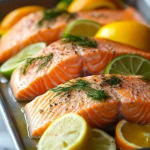
Roasted Salmon with Citrus & Dill Recipe
- Total Time: 28 minutes
- Yield: 4 servings 1x
Description
This roasted salmon recipe is a celebration of fresh flavors and simple elegance. Tender salmon fillets are infused with the brightness of citrus and the fragrant touch of fresh dill, making it an ideal dish for weeknight dinners or festive gatherings. Easy to prepare yet impressive on the table, it’s a recipe that delivers both comfort and sophistication.
Ingredients
-
2 pounds salmon fillet (skin on, preferably wild-caught)
-
2 medium oranges, thinly sliced
-
1 lemon, thinly sliced
-
1 tablespoon lemon juice (freshly squeezed)
-
2 tablespoons olive oil
-
3 garlic cloves, minced
-
1 teaspoon sea salt
-
½ teaspoon black pepper
-
¼ teaspoon crushed red pepper flakes (optional)
-
¼ cup fresh dill, roughly chopped
-
Fresh dill sprigs for garnish
Instructions
-
Preheat the oven to 400°F (200°C). Line a baking sheet with parchment paper for easy cleanup. Place the salmon fillet skin-side down in the center of the sheet and pat dry with paper towels.
-
In a small bowl, whisk together olive oil, lemon juice, garlic, salt, pepper, and red pepper flakes (if using). Spread this mixture evenly over the salmon.
-
Arrange the orange and lemon slices on top of and around the salmon fillet. Overlap the slices slightly for even cooking and presentation.
-
Sprinkle chopped dill generously over the salmon and citrus slices.
-
Roast in the preheated oven for 15–18 minutes, depending on the thickness of the salmon. The fish should flake easily with a fork but remain moist in the center.
-
Remove from the oven and let the salmon rest for 5 minutes. Transfer carefully to a serving platter, garnish with extra dill sprigs, and serve with your favorite sides.
Notes
-
For the best results, choose wild-caught salmon, which offers a richer flavor and firmer texture.
-
Avoid overcooking by checking the salmon’s internal temperature; it should reach 145°F (63°C).
-
Leftovers can be refrigerated for up to 2 days and used in salads, grain bowls, or sandwiches.
-
Substitute dill with parsley, basil, or thyme if desired for a slightly different flavor profile.
- Prep Time: 10 minutes
- Cook Time: 18 minutes
